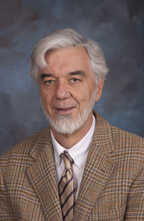Physical activity and fat-free mass during growth and in later life. Journal Article
Local Library Link: Find It @ Loyola
| Authors: | Westerterp, KR; Yamada, Y; Sagayama, H; Ainslie, PN; Andersen, LF; Anderson, LJ; Arab, L; Baddou, I; Bedu-Addo, K; Blaak, EE; Blanc, S; Bonomi, AG; Bouten, CVC; Bovet, P; Buchowski, MS; Butte, NF; Camps, SGJA; Close, GL; Cooper, JA; Das, SK; Cooper, R; Dugas, LR; Ekelund, U; Entringer, S; Forrester, T; Fudge, BW; Goris, AH; Gurven, M; Hambly, C; El Hamdouchi, A; Hoos, MB; Hu, S; Joonas, N; Joosen, AM; Katzmarzyk, P; Kempen, KP; Kimura, M; Kraus, WE; Kushner, RF; Lambert, EV; Leonard, WR; Lessan, N; Martin, CK; Medin, AC; Meijer, EP; Morehen, JC; Morton, JP; Neuhouser, ML; Nicklas, TA; Ojiambo, RM; Pietiläinen, KH; Pitsiladis, YP; Plange-Rhule, J; Plasqui, G; Prentice, RL; Rabinovich, RA; Racette, SB; Raichlen, DA; Ravussin, E; Reynolds, RM; Roberts, SB; Schuit, AJ; Sjödin, AM; Stice, E; Urlacher, SS; Valenti, G; Van Etten, LM; Van Mil, EA; Wells, JCK; Wilson, G; Wood, BM; Yanovski, J; Yoshida, T; Zhang, X; Murphy-Alford, AJ; Loechl, CU; Luke, AH; Pontzer, H; Rood, J; Schoeller, DA; Wong, WW; Speakman, JR |
| Article Title: | Physical activity and fat-free mass during growth and in later life. |
| Abstract: | BACKGROUND: Physical activity may be a way to increase and maintain fat-free mass (FFM) in later life, similar to the prevention of fractures by increasing peak bone mass. OBJECTIVES: A study is presented of the association between FFM and physical activity in relation to age. METHODS: In a cross-sectional study, FFM was analyzed in relation to physical activity in a large participant group as compiled in the International Atomic Energy Agency Doubly Labeled Water database. The database included 2000 participants, age 3-96 y, with measurements of total energy expenditure (TEE) and resting energy expenditure (REE) to allow calculation of physical activity level (PAL = TEE/REE), and calculation of FFM from isotope dilution. RESULTS: PAL was a main determinant of body composition at all ages. Models with age, fat mass (FM), and PAL explained 76% and 85% of the variation in FFM in females and males 18 y old, and 32% and 47% of the variation in FFM in females and males = 18 y old, respectively. In participants 18 y old, mean FM-adjusted FFM was 1.7 kg (95% CI: 0.1, 3.2 kg) and 3.4 kg (95% CI: 1.0, 5.6 kg) higher in a very active participant with PAL = 2.0 than in a sedentary participant with PAL = 1.5, for females and males, respectively. At age 18 y, height and FM-adjusted FFM was 3.6 kg (95% CI: 2.8, 4.4 kg) and 4.4 kg (95% CI: 3.2, 5.7 kg) higher, and at age 80 y 0.7 kg (95% CI: -0.2, 1.7 kg) and 1.0 kg (95% CI: -0.1, 2.1 kg) higher, in a participant with PAL = 2.0 than in a participant with PAL = 1.5, for females and males, respectively. CONCLUSIONS: If these associations are causal, they suggest physical activity is a major determinant of body composition as reflected in peak FFM, and that a physically active lifestyle can only partly protect against loss of FFM in aging adults. |
| Journal Title: | The American Journal of Clinical Nutrition |
| ISSN: | 1938-3207; 0002-9165 |
| Publisher: | Unknown |
| Date Published: | 2021 |



